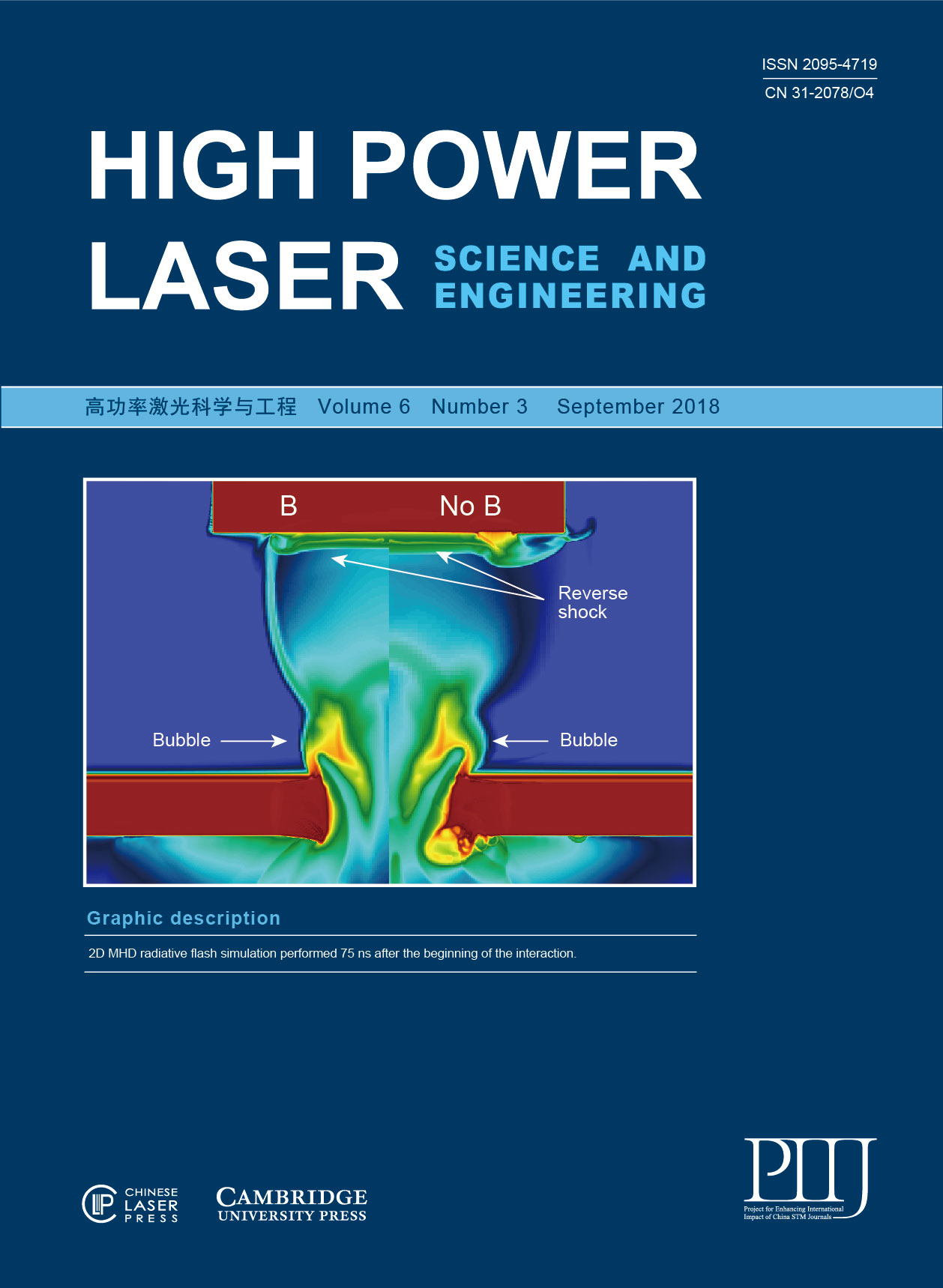 View fulltext
View fulltext
2D MHD radiative Flash simulation performed 75 ns after the beginning of the interaction.
Ytterbium-doped fibers have become the optimum gain media of high-power fiber lasers thanks to a simple energy structure, which strongly reduces the excited state absorption, and a low quantum defect and a high optic–optic conversion efficiency, which means the low thermal load. In this paper, we take a review of the current state of the art in terms of doped fibers for high-power fiber lasers, including the development of the fabrication techniques. The research work to overcome the challenges for doped fibers, which affect the stability of output power and beam quality, will be demonstrated. Direction of further research is presented and the goal is to look for a fiber design, to boost single fiber output power, stabilize the laser power and support robust single-mode operation.
An all-fiberized high-average-power narrow linewidth ns pulsed laser with linear polarization is demonstrated. The laser system utilizes a typical master oscillator power amplifier (MOPA) configuration. The stimulated Brillouin scattering (SBS) is effectively suppressed due to the short fiber length and large mode area in the main amplifier, combined with the narrow pulse duration smaller than the phonon lifetime of SBS effect. A maximal output power of 466 W is obtained with a narrow linewidth of 203.6 MHz, and the corresponding slope efficiency is 80.3%. The pulse duration is condensed to be 4 ns after the amplification, corresponding to the peak power of 8.8 kW and the pulse energy of . Near-diffraction-limited beam quality with an factor of 1.32 is obtained at the output power of 442 W and the mode instability (MI) is observed at the maximal output power. To the best of our knowledge, this is the highest average output power of the all-fiberized narrow linewidth ns pulsed fiber laser with linear polarization and high beam quality, which is a promising source for the nonlinear frequency conversion, laser lidar, and so on.

















